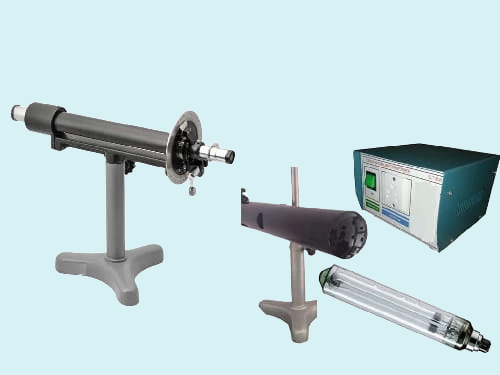
Polrimeter half side apparatus
Polrimeter half side apparatus
₹18500.00₹16500.00
The half-side apparatus, commonly known as a polarimeter, is a sophisticated instrument used for the measurement of optical activity in substances. Optical activity refers to the rotation of polarized light as it passes through a chiral substance, and the polarimeter serves as a vital tool in various fields including chemistry, pharmaceuticals, and food sciences. ### Overview of Polarimetry Polarimetry is employed to analyze the concentration of optically active compounds in a solution and determine their purity. This technique is indispensable for the determination of sugar content in food products, the analysis of enantiomers in pharmaceutical formulations, and the monitoring of fermentation processes in the production of alcohol. ### Components of a Polarimeter Typically, a polarimeter comprises several key components: 1. **Light source:** A monochromatic light source, often a sodium lamp or a laser, provides a consistent wavelength of light required for accurate measurement. 2. **Polarizer:** Positioned at the light source's output, the polarizer selectively allows only light waves aligned in a specific direction to pass through, creating plane-polarized light. 3. **Sample cell:** The polarized light travels through this transparent container that holds the optically active solution. The length of the sample cell can vary depending on the polarimeter design, usually ranging from 1 to 10 decimeters. 4. **Analyzer:** Located on the opposite side of the sample cell, the analyzer is another polarizer that can be rotated. By adjusting the angle of this polarizer, one can determine the degree to which the light has been rotated by the sample. 5. **Detector:** Finally, a detector measures the intensity of the transmitted light, which changes as a result of the optical rotation. This data is then used to calculate the specific rotation of the substance under test. ### How the Half-Side Polarimeter Works In the case of a half-side polarimeter, the design allows for a more compact instrument that operates under a simplified mechanism. The half-side polarimeter focuses on half the traditional approach, utilizing only one side of the apparatus for measurement rather than a separate entry and exit for light as in traditional models. This configuration helps reduce the material cost and physical size of the device while maintaining accuracy and precision in measurements. When a sample is placed in the sample cell and polarized light passes through, the light rotates according to the specific characteristics of the optically active substance present. The analyzer can be rotated until the light intensity reaching the detector is maximized or minimized, depending on the design of the instrument. The angle of rotation is then recorded, which can be employed to calculate the concentration of the optical substance based on known specific rotation values. ### Applications of the Half-Side Polarimeter The half-side polarimeter is particularly well-suited for applications where space is limited or where rapid measurements are required. Industries and fields where this device is commonly utilized include: - **Pharmaceuticals:** During drug formulation studies, polarimeters can quickly assess the enantiomeric excess, ensuring that the correct dosage and active ingredient formulations are achieved. - **Food and Beverage:** Monitoring sugar concentrations in beverages and assessing sweetness levels in products like syrups and jams offer critical quality control measures. - **Biotechnology:** Assessing fermentation quality by measuring the optical activity of metabolic byproducts can significantly impact productivity and efficiency. ### Conclusion The half-side polarimeter represents a significant advancement in polarimetric technology. Its compact design and efficient functionality make it an invaluable tool in laboratories and industrial settings, facilitating a wide range of applications in the analysis of chiral compounds. As research and development continue in this field, improvements and innovations in polarimetric techniques will likely enhance both the accuracy and convenience of optical measurements in various industries.
